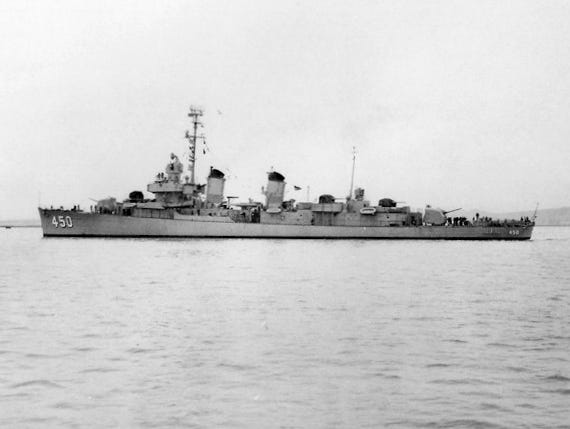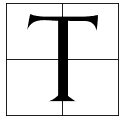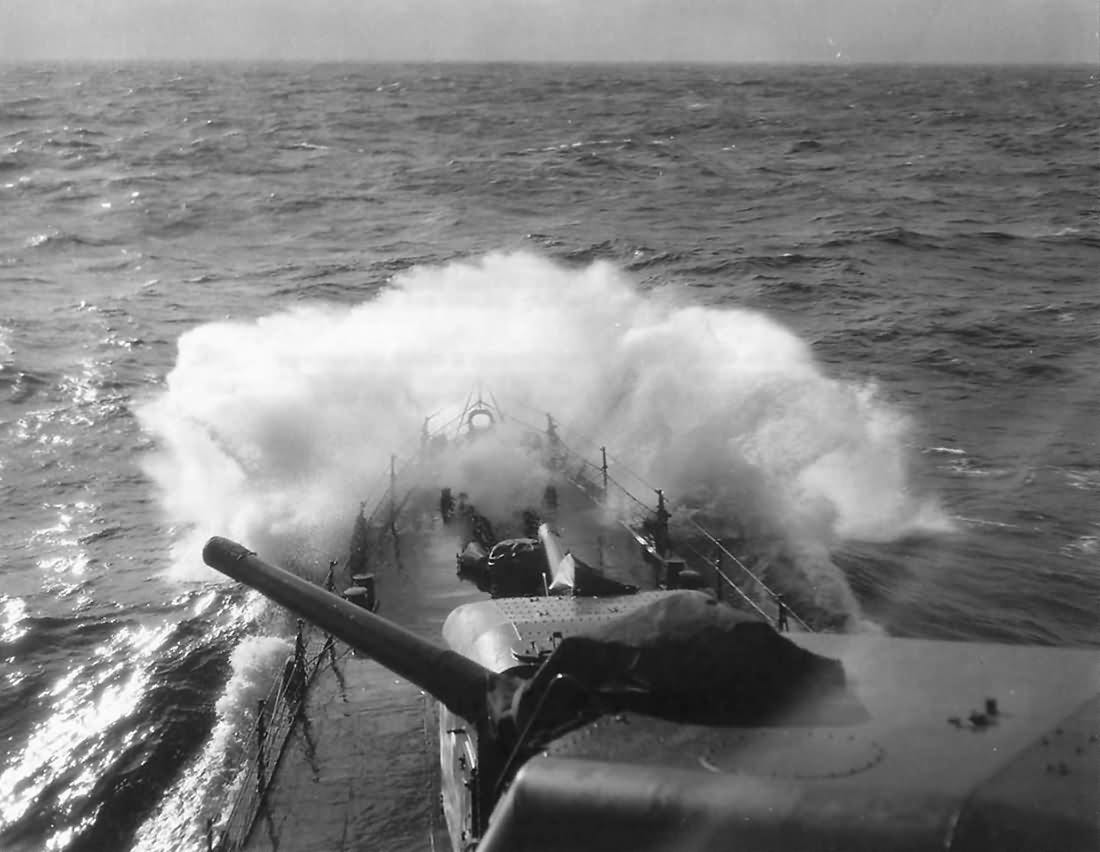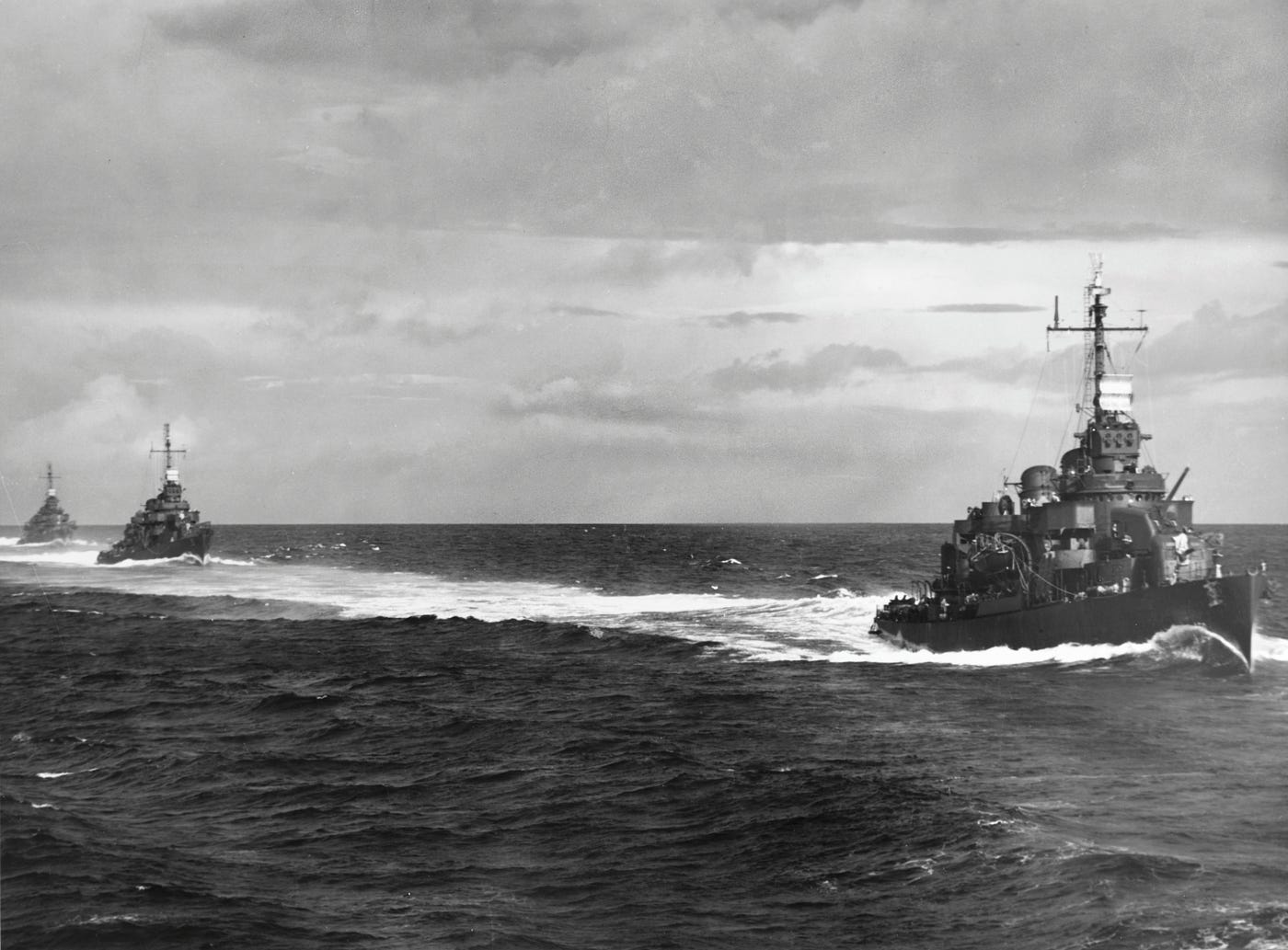The USS O’Bannon: The Only Ship To Attack Using Potatoes
In April of 1943 while on patrol in the Solomon Islands, the destroyer USS O’Bannon bravely attacked the Japanese Sub RO-34 using a secret weapon: Maine potatoes


T
he DD 450 known as the USS O’Bannon was a Fletcher class destroyer built and launched from the Bath Iron Works in Bath, Maine in 1942. The “Lucky O” as she was known, became the most decorated US Navy destroyer in her illustrious WW II career.The O’Bannon was named for Marine Lieutenant Presley O’Bannon the hero of Tripoli. Among her many battle stars and actions, she participated in the fight for Guadalcanal and was credited with the damage that led to the sinking of the Japanese battlehip Hiei.

The O’Bannon was personally selected by Admiral Halsey to participate in the Japanese surrender in Tokyo Bay in September of 1945 by escorting the US battleship Missouri to the ceremony because of their “valorous fight up the long road from the South Pacific to the very end”. She would be the first US warship to travel from Tokyo to the Golden Gate bridge in San Francisco from the ceremonies.
The infamous night: April 5, 1943
While on patrol on the night of April 5, 1943, with another destroyer the USS Strong, the O’Bannon made radar contact with a surfaced Japanese submarine, the RO-34 at a range of 9,000 yards.
The O’Bannon steamed forward to close the contact and had the RO-34 in sight at 2:30 am.

In the most fanciful version of this event, a visiting admiral was on the bridge when the sub was sighted and ordered the O’Bannon to approach at full speed in preparation to ram the sub.

In this version of the story, the O’Bannon’s captain awakened by the sudden acceleration of the ship, came to the bridge and saw the impending collision. Since the sub was on the surface he thought there might be a chance she was a mine-laying sub. With this in mind, Captain Wilkinson ordered left full rudder to avert the collision.
The O’Bannon missed hitting the RO-34 by mere yards and now lay parallel to the submarine. The sailors on deck could see Japanese sailors dressed in shorts and blue hats sleeping on deck oblivious to the American ship looming over them.
As the wave from the turning destroyer washed over the sub, it awakened the startled Japanese submariners. They stared up at the destroyer in disbelief. Meanwhile on the O’Bannon, the sailors struggled to bring their deck guns into action but could not elevate them down to the level of the sub at such a close distance.
What ensued next is the story of legends. The American sailors looking for anything to prevent the now fully awakened Japanese from getting to the 3" deck gun (which could damage the destroyer). As they reached into the deck lockers looking for small arms, they found only potatoes that were to be peeled for the next meal.

The O’Bannon’s sailors armed with spuds started throwing them at the Japanese sailors who in a panic mistook them for hand-grenades. They in turn threw them overboard or back at the O’Bannon. This back and forth spud throwing contest continued until the O’Bannon could gain some distance from the sub which started to submerge.
Once at a reasonable distance, the O’Bannon opened fire with her 5" guns and sent at least one round into the conning tower of the partially submerged sub. She and the Strong made several runs with depth charges and at 3:19 am the O’Bannon reported the sub sinking by the stern with an oil slick on the surface.
The O’Bannon reported the sub sunk. Was it by potatoes?
The Aftermath
The story of the brave O’Bannon as reported in the Star and Stripes newspaper falsely reported the O’Bannon sank the Japanese sub using potatoes.
The US press caught wind of the story and it became a self-fulfilling legend within the US Navy. Interviews with the captain of the O’Bannon led to corrections of the original published story but reunions of the crew kept the legend alive by giving press interviews and recalling the somewhat exaggerated truth.
The sensational story led the Maine Potato Growers Association to award a plaque to the O’Bannon in June of 1945. The plaque remained on the ship until its decommissioning in the 1970's.

Notably, the RO-34 has suvived it’s encounter with the O’Bannon only to be sunk by the Strong on the evening of April 7th with the loss of the 66 Japanese sailors aboard. The RO-34 was stricken from the Japanese Naval record as lost on July 14, 1943.
The legend of the brave American destroyer that attacked and sank a Japanese submarine in WWII exists to this day within the large number of US Navy sea stories.
